It seems we have rediscovered what electric service can do. Yet, some make remarks about hybrid and electric vehicles, such as that somehow they were just invented and that there is no way we will be able to accommodate all electric vehicles due to hitting our highways in a few short years.
Guess what?
Many of our great-great grandparents envisioned and used an advanced transportation system that used electric interurban railways. These small city-to-city or city-to-beach routes will mirror the services that autonomous vehicles are anticipated to do. However, this system ran into the economic buzzsaw of the inexpensive personal automobile and incredibly cheap gas.
This article will take us back to the turn of the century between 1890 and 1910, when an extensive interurban system of electric trains crisscrossed southern and mid – Michigan and extended to the Atlantic coast. It’s a glimpse of what was and spotlights an opportunity that may come again.
Table of Contents
Michigan’s System of Interurban Railways
By 1902 the growth of electric railways in the southern part of Michigan is illustrated in the accompanying map, which shows the lines already in operation, under construction, and for new franchises. The various roads on the map may be identified by their respective numbers and the populations of the cities through which they pass. The towns are shown by circles, which are proportionate to the population.
Southern Michigan Electric Railway Map
Interurban Roads Operational (1902)
- 1. Owosso & Corunna Electric Railway. (proposed to Flint via Vernon and Durand.)
- 2. Detroit, Rochester, Romeo, and Lake Orion (Detroit United Railway)
- 3. Rapid Railway Co. ( Detroit United Railway.)
- 4. Toledo, Adrian & Jackson Railway
- 5. Detroit and Toledo Shore Line Railway
- 6. Grand Rapids. Holland & Lake Michigan Electric Railway
- 7. Michigan Traction Co. (From Kalamazoo to Battle Creek.)
- 8. Saginaw and Bay City Interurban. (Saginaw Valley Traction Co.)
- 10. Detroit. Ypsilanti, Ann Arbor & Jackson Railway
- 11. Detroit. Mt. Clemens & Marine City (Detroit United Railway)
- 12. Grand Rapids. Grand Haven & Muskegon Railway
- 13. Detroit. Plymouth & Northville Railway (Detroit United Railway.)
- 14. Port Huron. Gratiot Beach & Electric Railway. (Detroit United Railway)
- 15. St. Joseph & Benton Harbor Electric Street Railway.
Interurban Roads Under Construction (1902)
- 16. Indiana Railway Co., South Bend, Indiana, (From South Bend to St. Joseph, Mich.)
- 17. Calhoun County Ry. (From Battle Creek to Jackson)
- 18. Battle Creek & Coldwater
- 19. Grand Rapids. Kalamazoo & South Haven Traction Co.
- 20. Lansing. St. John & St. Louis Electric Railway This road is operated by steam power temporarily between Lansing and St. Johns.
- 21. Detroit, Howell, and Lansing Railway
- 22. Saginaw Suburbian Railway (To rub between Saginaw and Flint)
- 23. Michigan West Shore Traction Company (This road extends from Benton Harbor to South Haven)
Proposed Suburban Roads (1902)
- 24. Kalamazoo Traction Company. (To run from St. Joseph, Benton Harbor to Kalamazoo)
- 25. Central Michigan Traction Company ( To run from Vermontville to Charlotte and Eaton Rapids)
- 26. Corunna & Durand (This is an extension of the present line between Owasso and Durand)
- 27. Detroit, Pontiac, and Lapeer Northern Railway
- 28. Adrian and Coldwater Railway
- 29. Lansing and Grand Rapids Railway
- 30, Grand Rapids to Belding, Lowell, and Ionia
- 31. Detroit, Ann Arbor, and Adrian
- 32. Jackson & Lansing
- 33. Jackson to Coldwater
- 34. Dexter to Lansing
- 35. Caro to Lake Huron
- 36. Detroit, Lenox & Sanilac Center
Owosso & Corunna Electric Railway
In 1893, the first streetcar line was built between Owosso and Corunna. It was steam operated for two years and then converted to electricity. The interurban station was in downtown Owosso, at 113 S. Washington St. The electric-powered passenger car went south from Owosso, thru Perry, Lansing, then Jackson. In town, it was powered by overhead lines, but it used an electrified third rail in rural areas. (Source: https://www.shiawasseehistory.com/)
Michigan Central Railway Between Ann Arbor and Ypsilanti
“In the summer of 1890, one of those useful but unpopular promoters dropped off the train at Ypsilanti and began to get a franchise for a street railroad between Ann Arbor and Ypsilanti. He got some people of those towns interested after a lot of urging and what seemed big traffic stories to be developed. For instance, he claimed that five hundred people a day would want to ride between the towns.
It seemed impossible after we had ascertained that the Michigan Central was only carrying forty people a day between Ann Arbor and Ypsilanti. However, word came in from other towns with the service that ridership was in the hundreds. This was mainly because the service was every hour and a half, while the fare one way was ten instead of twenty-five cents on the steam railroad.
The business plan for the new railway was greatly helped by the simple fact that that college in Ann Arbor had three thousand boys and not enough girls. While the college in Ypsilanti had a thousand girls at the teacher’s college and not enough boys. The street railway helped restore equilibrium, especially on Friday evenings, Saturdays and Sundays”. (Source Michigan Pioneer and Historical Society Vol. XXXV 1907)
Detroit, Almont, and Northern Railroad Company
The Detroit, Almont, and Northern Railroad Company extended its line from Romeo to Almont. This company is a subsidiary of the Detroit United Railway, and that company operates its property. Schedules for its operation went into effect July 1, 1914. The D. A. & N. Co. was proceeding with extending its road northerly to Imlay City at the close of the year.
Orchard Beach, Manistee, Michigan
The loop at Orchard Beach, Manistee, Michigan — electric trolley interurban.
Detroit United Lines
The Detroit United Railway was built with the intent to bring railway service to citizens living in Detroit and its suburbs. But the company’s roots go back to the 1800s, when many different streetcar companies pushed their services along the brick streets and wood plank roads of Detroit.
During the late 1800s, Detroit had approximately twenty-nine streetcar companies operating in and around the city. By August of 1901, the Detroit United Railway had acquired all but one of these interurban lines, making it possible to travel to far away cities such as Port Huron, Flint, Pontiac, Ann Arbor, Jackson, and Toledo
The Detroit United Railway was a well-established railroad system in Michigan until 1925. This photo essay highlights some of this line’s decline and eventual demise.
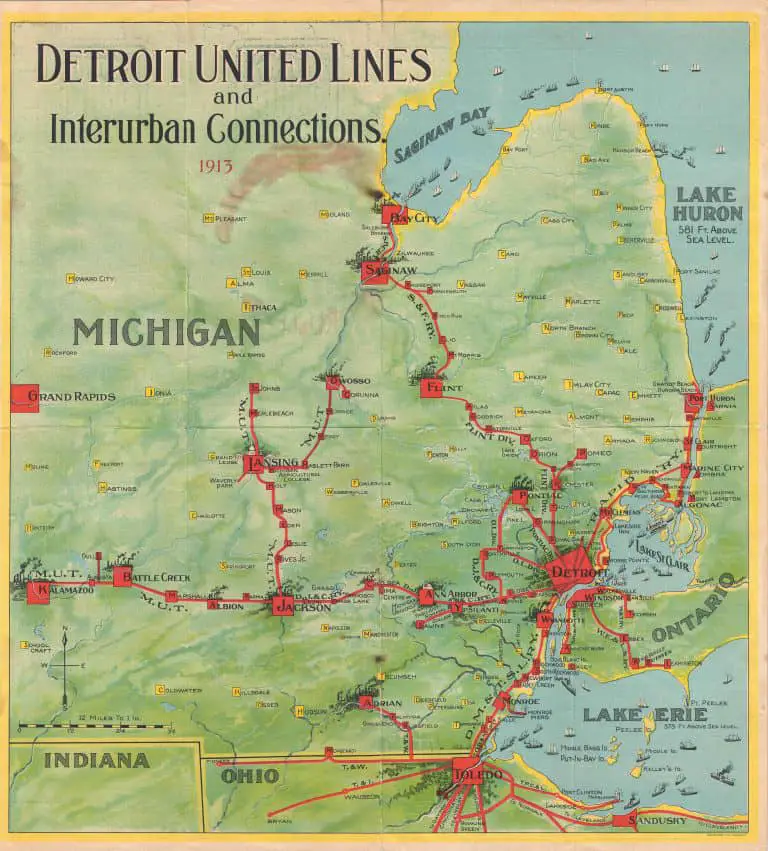
The Detroit United Railway was a conglomeration of interurban railways formed in 1901. The D.U.R. let the people of Rochester, MI, and the surrounding area travel to Detroit and other Michigan cities within a short amount of time with fast, efficient trains that ran on time. By linking small towns and farms to larger cities and urban centers, they helped shape the state’s identity until they were abandoned in the 1920s with the rise of automobiles.
In April 1931, there was sadness around Paint Creek as “a parade of cars [left] the Rochester carhouse on their last trip to Highland Park.” Today, there are no tracks that remain from the D.U.R. in Rochester.
Michigan United Railways
he Michigan United Railways (MUR) was a transportation company operating interurban railways in Michigan during the first decades of the twentieth century. By May 1907, it controlled lines running from Kalamazoo to Jackson and from Lansing to St. Johns. In a little over a year, these individual properties were consolidated into two interconnected networks, one running between Kalamazoo and Jackson, the other between Lansing and St. Johns.
The former served communities such as Vicksburg, Battle Creek, Jackson and Lansing in addition to Kalamazoo, while the latter connected those same cities with one another. Michigan United Railways was Michigan’s last interurban railroad.
Pontiac & Sylvan Lake Railway Company
On October 1, 1895, the first interurban railroad service in Oakland County began service between Pontiac and Sylvan Lake. The popularity of streetcar ridership peaked in 1912. When everyone wanted to go to the beach in July, 200 people cycled together to Sylvan Lake. Between two and nine p.m., a half-hour service was scheduled. The cost from Pontiac to Sylvan Lake was increased to 10 cents or 12 tickets for one dollar in August 1930. Service terminated in 1932, and during World War II, the rails along Garland were dismantled for scrap metal.
St. Joseph & Benton Harbor Electric Light & Railway Co.
At Berrien Springs, there are eight 15-foot through trusses on concrete piers that span the St. Joseph River. The cities of South Bend, the southern terminus, St. Joseph, the northern terminus, Niles, approximately a quarter of the route’s length north of South Bend, and BerrienSprings, roughly the same distance south of St. Joseph, will provide the majority of passenger traffic. The interurban carriages will have good terminal amenities thanks to trackage rights gained in the two terminus cities. The interurban vehicles run for roughly 4.000 feet across the lines of St. Joseph & Benton Harbor Electric Light & Railway Co. in St. Joseph. The road is double-tracked in this section. The interurban line’s private right of way reaches within one-half mile.
The Detroit United Railway and Rapid Railway Route Map
Toledo and Monroe Railway Interurban
To escape the summer heat, Monroe residents looked forward to day visits to the Lake Erie coastline and the banks of the River Raisin in the late 1800s. During the late 19th and early 20th centuries, this train trolley was a popular and convenient method to get to what was then known as the Monroe Piers neighborhood of Monroe, showcasing trips to the Monroe Lighthouse Hotel Lotus and other attractions in the Monroe Piers region.
The Toledo and Monroe Railway interurban street railroad powerhouse at the intersection of Elm Avenues and Monroe Street in Monroe, Michigan, in 1901.
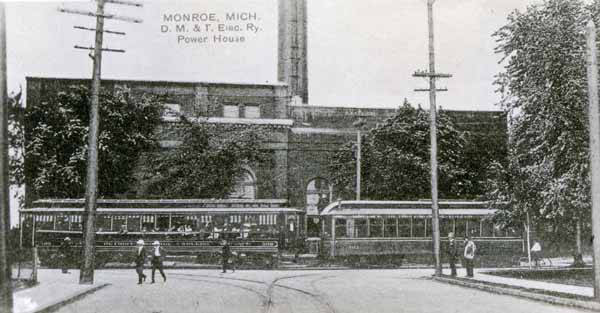
Interurban streetcars # 501 and 509 of the Toledo and Monroe Railways on Elm Avenue at the Monroe Street junction in Monroe, Michigan, in 1906.
This black and white photograph shows a Toledo and Monroe (interurban) Railway vehicle with personnel. It was shot about 1900 in Monroe, Michigan, in front of the Toledo and Monroe Railway Powerhouse on Elm Avenue and Monroe Street.
Toledo and Western Railway Company – Adrian, Michigan
Passengers board Toledo and Western Railway Company interurban streetcar No.2 at the underpass in Adrian, Michigan, in 1903.
Lansing & Suburban Traction Company
Turning into the city tracks to enter Lansing stock equipment of the city operating company for use on the city lines, one of the regular double-truck cars in use on the interurban division. Several Jewett open automobiles are included, one of which is seen in an accompanying illustration. Single-truck cars are often utilized on municipal lines, while double-truck cars are used on the 3-mile route to Michigan Agricultural College. The company’s regular city car is a single-track vehicle 22 to 26 feet long, whereas the Agricultural College line uses 42-foot double-truck cars. Most of the older autos were previously utilized in the city on February 25, 1905.)
Lansing, St. Johns, & St. Louis Railway
The Lansing, St. Johns, and St. Louis Railway was an electric interurban railway that briefly operated independently in central Michigan during the early 20th century. It was the site of a failed attempt to introduce alternating current to the interurban scene. During its inception, the company had come to the attention of Bion J. Arnold, an American engineer well known for his innovations in electrical engineering, who would later build New York City’s Interborough Rapid Transit subway system. Arnold sought an opportunity to test his idea of using single-phase alternating current instead of direct current for locomotive power. His company received the contract for the road’s construction, and work commenced in mid-1900.’
Grand Rapids, Grand Haven and Muskegon Railway
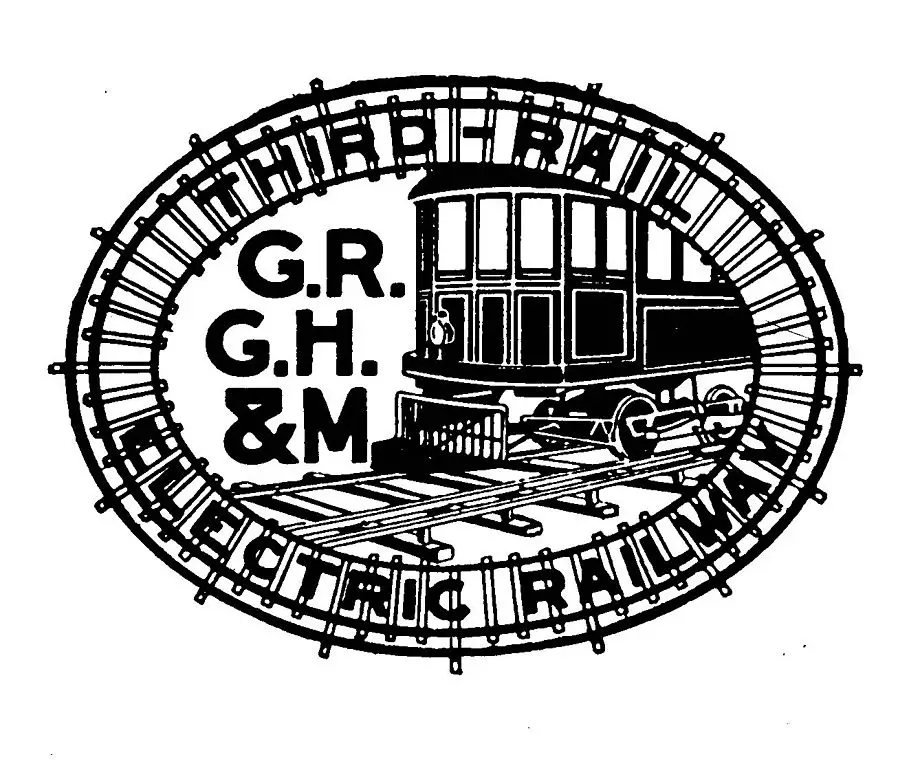
The Grand Rapids, Grand Haven, and Muskegon Railway was an interurban electric railway in Michigan during the late 19th and early 20th centuries. Established in 1902, the railway provided a vital transportation link between Grand Rapids, Grand Haven, and Muskegon, serving as a key connector for passengers and freight. Utilizing electric-powered railcars, the system was part of a larger network of interurban lines that thrived in the region before the rise of automobiles and highways.
Known for its efficiency and convenience, the railway helped stimulate economic growth and regional development by facilitating travel and commerce along Michigan’s western coast. Despite its success in earlier years, the railway ceased operations in 1928, reflecting the broader decline of interurban systems nationwide due to increasing competition from automobiles and trucks.

Primary Source
The Street Railway Review 1902, Chicago, Windsor & Kenfield Publishing Company
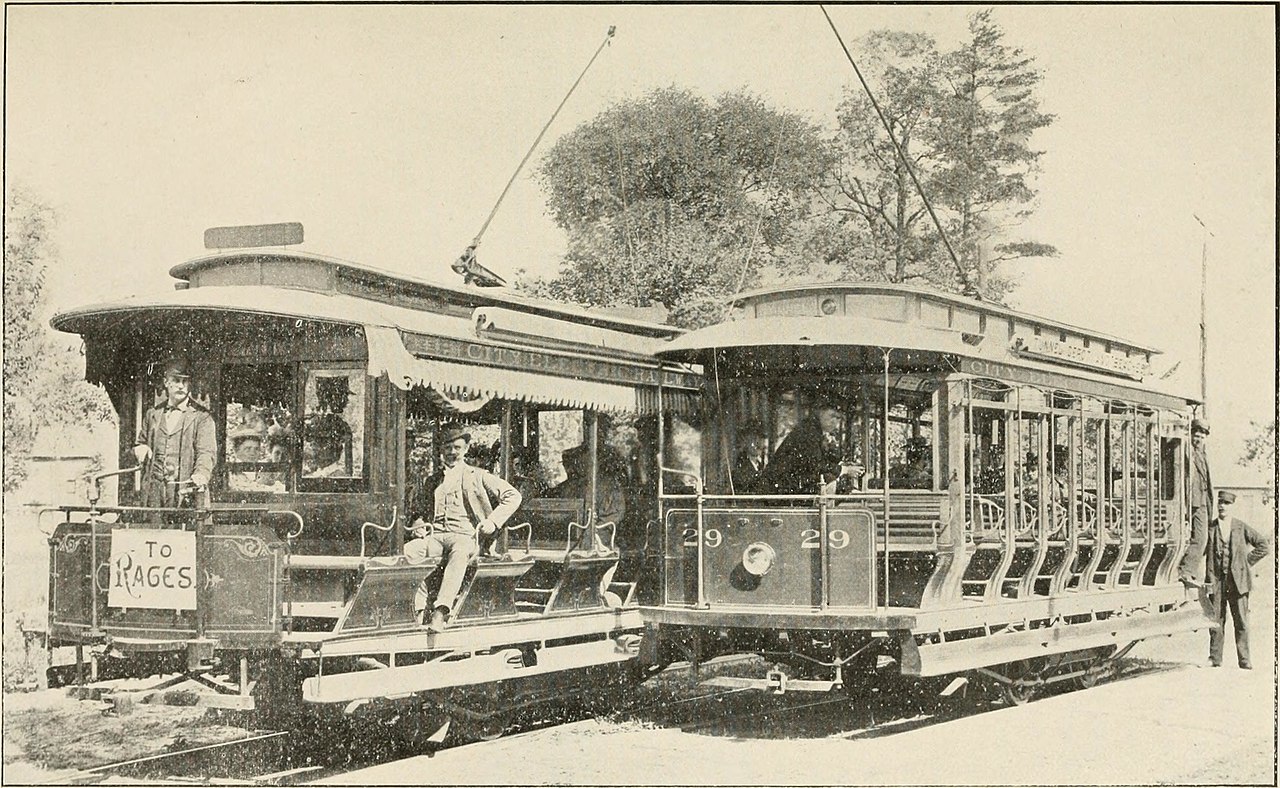
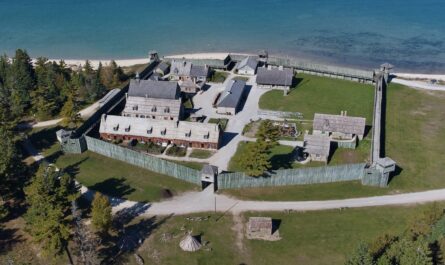
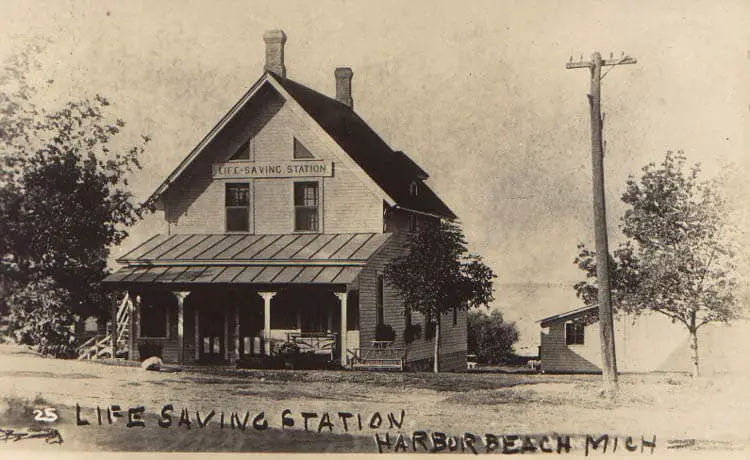
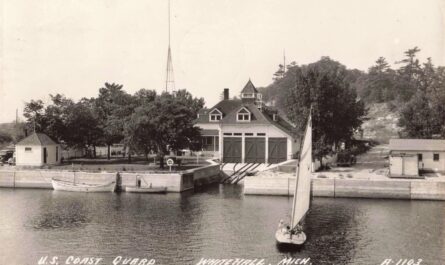
Hey Ms Nolte,
I enjoyed your Interurban piece. My great grandfather worked on it for many years and was the head of the union at one time. He also ran for Mayor of Lansing in 1930 and lost by a handful of votes. He also ran a restaurant in downtown Lansing, Mi. His name was Herbert Chamberlain. I found a picture of an interurban car with its crew arriving in Leslie, Mi on the opening day of service. This picture was on auction about 20 years ago. I am trying to see if he is on that photo. Send me an address and I will forward it to you.
You can send a copy of that photo to contact@thumbwind.com. Include as much information as you can on how you have this photo and any background information.
Michaela – were you able to obtain that photo from the Leslie opening day? Would love to see it as I grew up there!
St Joseph Benton Harbor Electric Light & Railway : This company also had a line from Benton Harbor to Sodus ,Eau Clare , Indian Lake and it ended in Dowagiac. Along M-62 west of Dowagiac you can still see where the line went through including the old bridge over the Dowagiac River. There were plans to extend the interurban from Dowagiac to Cassopolis but that line was never built. Although sections of the railroad bed for this line was built and you can see evidence of this off Peavine St east of Cherry Grove Rd. Another line was proposed from Cassopolis to Decatur and then to Paw Paw that line was never built . There was another line that went from Benton Harbor to Coloma and Paw Paw Lake/ Watervliet.
Cool + for the post
There was a Trolley bridge on Otter Creek just south of Hwy 24 in Monroe County Michigan had a date plaque that said 1910 if I remember right. Walked the creek in the late 60s and always wondered about it afterwards.
I wish the interurbans were still working. Thank you for your comment.